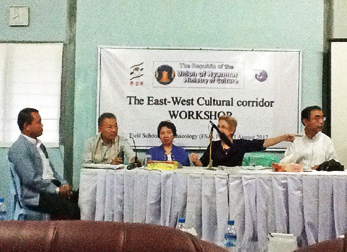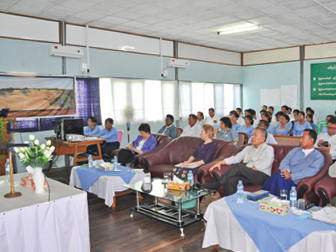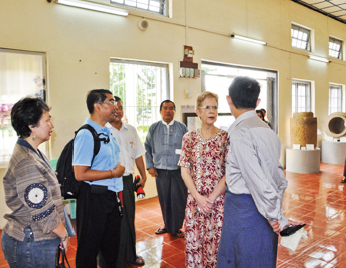Project Leader:SHIBAYAMA, Mamoru (Center for Integrated area Studies, Kyoto University)
Collaborators: SURAT, Lerlum (Computer Program, Chulachom Khrao Royal Military academy)
HOWARD, Elizabeth (Moore) Whittem (School of Oriental and African Studies,
University of London)
KOBAYASHI, Satoru (Center for Southeast Asian Studies, Kyoto University)
MATSUURA, Fumiaki (Institute of Asian Cultures, Sophia University)
Term:2012-2013
Outline of Research:
The project proposes two related case studies to delineate similarities between local and regional Buddhist cultures. While centered on examples in Myanmar, the study highlights physical and cultural networks shared with Thailand and Cambodia. A related purpose is to facilitate the educational sharing of the findings though placing archaeological, anthropological, cartographic and remote sensing data within a geospatial environment. This can enable identification of local and transnational commonalities in past and living heritage communities. The first study uses artifact comparison to propose road, river, trade and cultural routes between eleven Iron Age and walled Buddhist sites in Upper Myanmar of the first millennium CE. The second study uses artifacts and local and foreign historical material from Dawei, Tanintharyi Division, Lower Myanmar, to define common historical links with Thailand and Cambodia. These include not only political and economic factors related to Dawei’s strategic maritime and inland connections, but common beliefs and ritual practices within the shared Buddhist heritage of these countries.

First workshop on the East-West Corridor at the Pyay School of Archaeology, Department of Archaeology, Myanmar on
21, August 2012
Description:
The project aims to move beyond the ethno-linguistic and national paradigms embedded in the literature on Myanmar and neighboring regions. Post-colonial discourse risks replacing the local-foreign dichotomy with another model that essentializes the nuances which give local cultures their distinct identity. Instead, this project is geo-spatially grounded through the cities and places of the related case studies. Employing GIS to draw together historical records, remote sensing and cartographic resources, the local significance of artifacts is informed by road and river networks and the cultural corridor of past and living communities. The project underlines the inseparability of the environment and local prerogatives determining the syncretic character of Buddhist cultures across mainland Southeast Asia.
In this context, the geo-informatic structure is compatible with local chronicles, historical records and archaeological artifacts in mapping a cultural landscape of cities, rivers and peoples, their local beliefs as well as use, production and trading of resources. The projects seeks not just quantitative data but in interpreting the past through anthropological documentation of natural resource use, the ritual beliefs and practices of living communities, but also understand the past as well as the present routes linking physical and intangible networks.


